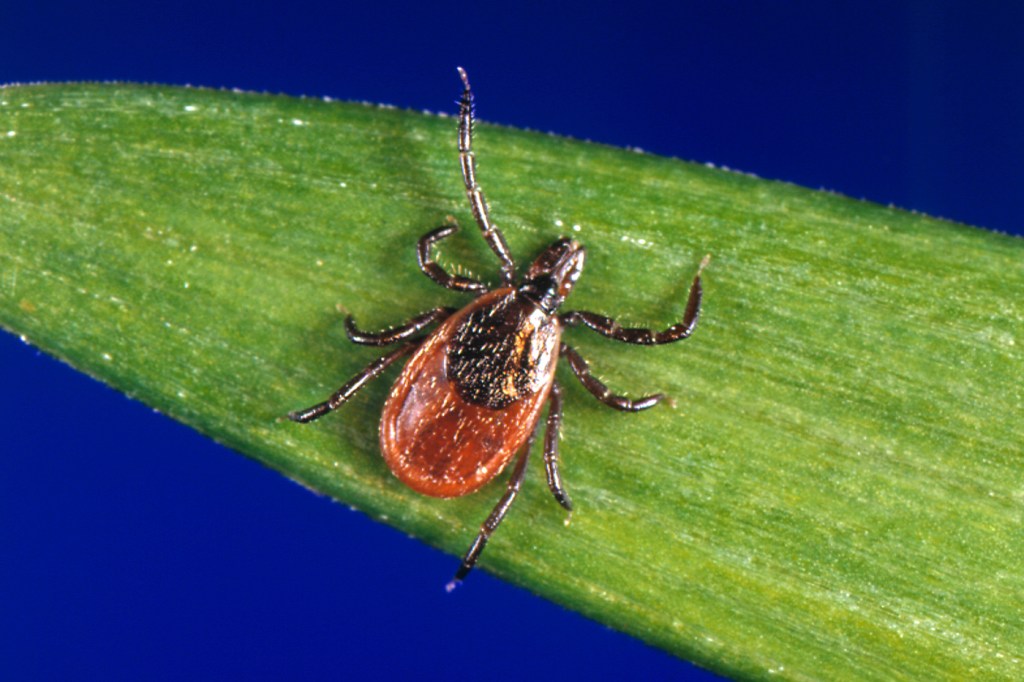New Northeastern lab studying ticks and Lyme disease may offer clues about the bacterium that causes infection

Most people try to keep their distance from the deer tick that transmits Lyme disease and the bacterium that causes it.
Not researcher Constantin Takacs. He plans to order one and is cultivating the other in his new lab at Northeastern.
For Takacs, who joined the faculty in January as an assistant professor of biology, few bacteria are as interesting as Borrelia burgdorferi, the corkscrew-shaped organism—called a spirochete—that spreads Lyme disease via tick bites.

“This is a very unusual bacterium. It’s not organized the same as other bacteria. It’s even different from other spirochetes,” says Takacs, whose lab will be dedicated to the study of the spirochete and its tick vector.
His recent research on the formidable qualities of Borrelia burgdorferi—including an ability to make multiple copies of its chromosomes—may offer clues about how this bacterium functions, survives in nature, and transmits to new hosts.
“An infection by a bacterium that does things differently would benefit from being treated by different compounds,” Takacs says. “We need to think a few steps ahead.”
A different kind of spirochete
While other spirochetes, such as Leptospira, can live in contaminated water, Borrelia burgdorferi is the only spirochete that requires a vector or living organism to transmit infectious pathogens to animals and humans, Takacs says.
In the case of Borrelia burgdorferi, the vector is the deer tick, which has turned out to be an accommodating and hardy host.
Takacs says deer ticks can live for more than a year without eating. “If you take a tick and keep it in a jar for a year or two, the bacteria inside is fine” and ready to spring into action when the tick finally gets a blood meal, he says.
It’s also been known for years that Borrelia burgdorferi has a more complex genetic makeup than other bacteria, Takacs says.
“Most bacteria have one circular piece of DNA, called a chromosome. Leptospira has two. Borrelia burgdorferi has about 20, and some of them are linear,” he says.
“They’re very good at staying alive”
And that’s not all.
Takacs, who did postdoctoral work at Stanford and Yale universities, published a study in 2022 that used fluorescent microscopy to show that each of the genome segments makes 10 copies of itself.
“That tells us these bacteria function differently than other bacteria. There are actually very, very few bacteria that we know of that have that many copies of their genomes,” Takacs says.
“We’re trying to find out why. We’re trying to find out what is the role of having so many copies.”
The visualization of the bacterium’s genomic information also showed that the copies were equally spaced in the cell.
“That tells us the bacteria has come up with a brilliant way to ensure that once it divides, both daughter cells receive copies of all the genome pieces,” Takacs says. “They inherit everything.”
“That’s why if you go into nature and test an infected animal or a colonized tick, the Lyme bacteria that they carry all have a very large number of genome segments. These spirochetes are very good at staying alive in their natural environment.”
Progress with advanced technology
Takacs says using techniques such as high resolution fluorescence microscopy to its full potential to study Borrelia burgdorferi will help speed scientific advancements.
Additionally, in 2021 he published a study that used CRISPR interference to target Borrelia gene functions.
“That allows us to study what gene A does and then what gene B does in a very accessible way,” Takacs says.
“We’re learning a lot of new and interesting things about how the bacteria is made and organized. We’re hoping this is going to teach us why it behaves the way it does.”
Getting the lab up and running
Takacs says his lab is in the process of recruiting graduate and undergraduate students and postdocs.
“The equipment is coming in. This is a new lab. I’m not in the new space yet. I need various approvals to get the ticks in,” he says.
“I’ve started growing the bacteria again, just recently,” Takacs says.
“I’m very excited about teaching others all these tricks on how to make it grow, how to do genetic modifications and how to learn what it does.”
Takacs says that he is not a medical professional and cannot comment on treatment but understands that those who are not treated early with antibiotics can have problems later on, including arthritis.
In lieu of vaccine, prevention
The Centers for Disease Control and Prevention says that untreated Lyme can also spread to the heart and nervous system. The federal agency says an estimated 476,000 people get Lyme annually.
Cases will begin surging in the next month or two, when nearly invisible, poppy seed-sized nymphal ticks begin emerging.
“I know that there are vaccines in the pipeline,” Takacs says. “I would love to see the results of clinical trials which are going to inform us whether the vaccine is effective and the vaccine is safe.”
In the meantime, the CDC recommends that people take steps to prevent infection by using insect repellent, removing ticks promptly, applying pesticides and reducing tick habitat.
Cynthia McCormick Hibbert is a Northeastern Global News reporter. Email her at c.hibbert@northeastern.edu or contact her on Twitter @HibbertCynthia






